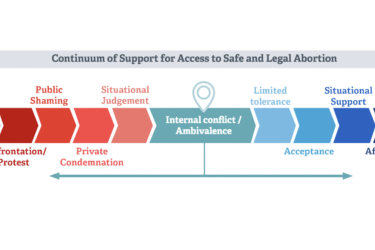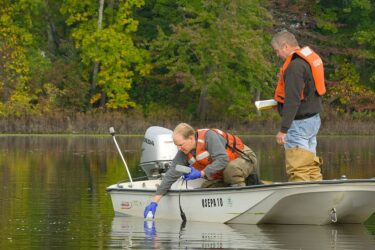
It’s a jaw-dropper of a story. A reluctant television reporter is persuaded by her producers to have a mammogram in front of the cameras. A few weeks later, she reveals the results on air: The test she initially didn’t want found cancer.
In an essay for ABC News, her employer, Amy Robach wrote:
The doctors told me bluntly: “That mammogram just saved your life.”
If you’re a woman, this is the kind of news that sends a cold stab of fear through you. Here’s a professional in the prime of her life with no family history and, by her own estimation, very little in the way of personal risk. And she’s young — just 40 years old.
The problem with Robach’s story is that it is too scary. It seems to be a play for ratings in November, a month when television stations rely on viewership numbers to set advertising rates.
The personal cancer story is familiar and gratifying territory for Good Morning America, a show that took over the top spot in the competitive morning show market while covering anchor Robin Roberts’ battle with myelodysplastic syndromes, or MDS. That coverage also was criticized by some media watchdogs.
If Robach’s story works as intended, spurring women who identify with her to get screening mammograms, good medical studies tell us that this report will probably harm many more women than it helps.
Don’t get me wrong. A cancer diagnosis is a terrible thing. I wish it hadn’t happened to her. I’m sure she had good intentions in sharing her story.
But I’m feeling a little less sympathy for GMA’s producers and the hundreds of me-too stories that followed in the wake of the splashy morning announcement. Most offered us no real information about her diagnosis (what kind of breast cancer? what stage?) and zero balance.
(Do you think this escaped the sharp eyes of Gary Schwitzer at HealthNewsReview.org? No, it did not.)
Most stories exhorted women, against the advice of public health authorities, to get checked. Robach wrote:
I can only hope my story will do the same and inspire every woman who hears it to get a mammogram, to take a self-exam. No excuses. It is the difference between life and death.
Here’s what these stories didn’t mention:
- In the world of breast cancer, Robach is the exception, not the rule. According to data from the National Cancer Institute’s SEER registry, less than 10 percent of women who get breast cancer are diagnosed between the ages of 35 and 45. Most are over age 60 at diagnosis.
- Screening mammograms for women ages 40-49 are controversial. The U.S. Preventive Services Task Force doesn’t recommend that women get regular screenings between the ages of 40 and 49. That’s because the harms of regular screening for women of average risk in this age group can outweigh the benefits.
- Those harms include initially suspicious results that turn out to be negative. One study that looked at the risk of false positives over a decade of testing in younger women found that half of cancer-free women get called back for additional testing. One in eight get referred for a biopsy, an invasive procedure that carries the risk of pain, infection and scarring.
- Studies also have measured the real risks of overtreatment of breast cancer. A Cochrane Review published in June found that, for every 2,000 women screened with mammograms for 10 years, one breast cancer death will be prevented, but 10 women will be treated for breast cancer unnecessarily.
- Let’s not forget the psychological harm. The same Cochrane Review found that for every breast cancer death prevented, 200 more women would feel the life-altering stress and anxiety of a suspicious test that later turned out to be nothing.
Women don’t need to be further terrified about breast cancer. Studies consistently show that women overestimate their risk of getting breast cancer while underestimating their risk for more common and deadly conditions, like heart disease. We get it. Breast cancer is awful. It strikes good people without warning. It overturns lives.
What’s called for now is balance and information.
AHCJ’s Statement of Principles, which identifies unique challenges that health care reporters face and suggests how to meet those challenges, reminds reporters to distinguish between advocacy and reporting, to quantify the magnitude of the benefit or the risk and to report the complete risks and benefits of any treatment.
For a powerful counterpoint to Robach’s story that doesn’t ignore the science, it is worth re-reading Peggy Ornstein’s great story for The New York Times Magazine, which begins:
I used to believe that a mammogram saved my life.










